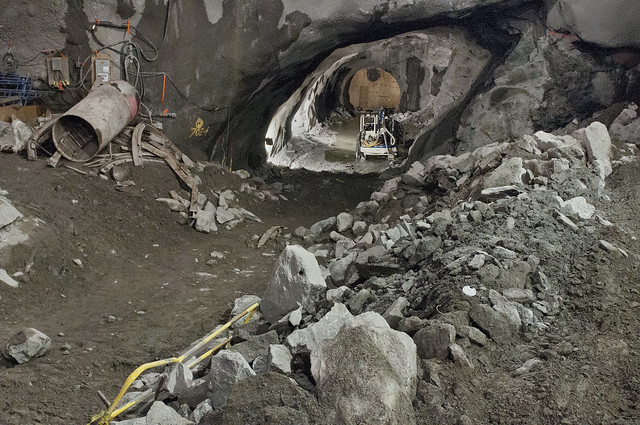Every few months, when the MTA institutes seemingly endless weekend service changes that rob some neighborhoods of their train service, local news outlets feature stories on the economic impact of the subway service reductions. Every few months, I’m reminded of how New Yorkers take the subway system for granted and how truly important it is for the city’s economy.
This month, we have two stories from two different neighborhoods. DNA Info highlights how the L train service changes impact Brooklyn businesses. Foot traffic is always done when the L train doesn’t run, and even though merchants know the service cuts are for technological upgrades, it doesn’t help ease the pain.
Daniel Squadron, the State Senator who represents the area, has asked the MTA to make sure the diversions are only when necessary. “Good coordination, communication and planning can help make the effects less damaging for businesses and communities,” he said to DNA Info. “This is the first step, organizing businesses together to identify solutions for mitigating the effects.”
Meanwhile, business owners in Long Island City are living through a lengthy 7 line outage, and they’re suffering as well. Right now, we’re amidst a stretch without the 7 serving the area until April, and Transit says it will happen again for six weekends after baseball season ends. “It happens every year,” one restaurant manager said. “So we’ve been dealing with it for the last nine years.”
New businesses too are noticing the impact. A new comedy club in Long Island City says that advanced sales are down when the subway is out. People who would otherwise make the trip from Manhattan do not care to add a longer walk or a shuttle bus ride to their journey. His compromise is to refund those who do come $2.25, the price of their ride. “If the MTA is going to give us a middle finger, we might as well fight back with ours,” Steve Hofstetter, the club owner, said.
Now, none of this should come as a surprise. After all, a city of 8 million with its central business district an island wouldn’t be able to function without the subway system. The city wouldn’t be as vast and as powerful if millions didn’t have relatively quick and efficient ways to get around. The subway is the lifeblood of the city’s economy.
Yet, oftentimes, complaints and not appreciation are the norm. We want better service, cleaner stations, fewer problems. We want cheaper fares and faster construction. We want the system to be better so we don’t have to worry as much about our travel options. None of these desires are wrong, and if anything, they show how New Yorkers want more out of their transit system. More though requires political and economic support. Without a voice fighting for the subways and without the proper mix of subsidies that spur on growth, we’re left with a system that will sag under its age.
Whether New Yorkers care to recognize it or not, the city is what it is because of the subways. Perhaps it was dumb luck that got us here, and we’ve sort of stalled as the subway system hasn’t expanded in decades. But we need look no further than businesses that suffer when the subway isn’t running to appreciate the impact public transit has on our city. It may not always be pretty, but we’d be lost without it.



